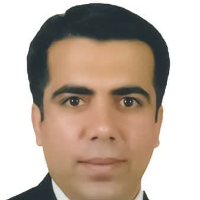A Study on Performance of Secondary School Students in Solving a Spatial Ability Task based on SOLO Theory
Recent research by Rivera and Sinclair et al. Shows the impact of spatial abilities on achieving different goals in different fields of study and real life, and suggests the need to extend its learning to all levels of education. Traditional approaches to teaching geometry based on the classification of shapes and objects and their properties have been intuitively focused on ultimately formal proof. Currently, more emphasis is placed on spatial abilities such as mental rotation, representation of three-dimensional objects, and coordination of motion and position. Incorporating such abilities into textbooks plays an important role in students' understanding of the concepts of geometry. Structure of Observed Learning Outcome (SOLO) is one of the most practical theories that falls into the general and local frameworks of cognitive development. The importance of this theory is that it can assess students' understanding of a subject at all ages. The aim of this study was to investigate the ability of students' spatial skills in solving one task and to analyze their responses based on SOLO taxonomy. Solo theory is one of the theories of mathematical education, which has a great application in our cognition of mathematical understanding and math learning of students.
The research method is descriptive of survey type .A question of the Purdue standard questionnaire on spatial visualization has been selected which its formal and content validity has been confirmed by 3 math education professors and 4 teachers of geometry. By using the criterion of Cronbach's alpha, this approximate reliability coefficient(0.9) was obtained.The participants in this study were 498 students from the tenth , eleventh and twelfth grade students who were selected randomly in a multi-stage cluster of theoretical and technical schools in Bushehr.
The results show that in the field of visualization 59% of students in ordinary schools are in a unistructural level. In this regard, none of the technical students reached multistructural and relational levels. While analyzing responses, their thinking patterns, multiple solutions, strategies and common misconceptions have been analyzed. The results of the study are very important for the planners, the authors of the textbooks and the researchers.
The SOLO model helps teachers assess student learning outcomes and assess students' understanding. In order to improve students' understanding of spatial visualization and increase spatial skills, it is suggested that such issues be used in curricula and textbooks. The use of dynamic geometry and software is effective in better understanding spatial visualization, as shown by research by Demir and Ildiz. The use of the solo model is also suggested to researchers and teachers to assess students' understanding of a subject.
- حق عضویت دریافتی صرف حمایت از نشریات عضو و نگهداری، تکمیل و توسعه مگیران میشود.
- پرداخت حق اشتراک و دانلود مقالات اجازه بازنشر آن در سایر رسانههای چاپی و دیجیتال را به کاربر نمیدهد.




